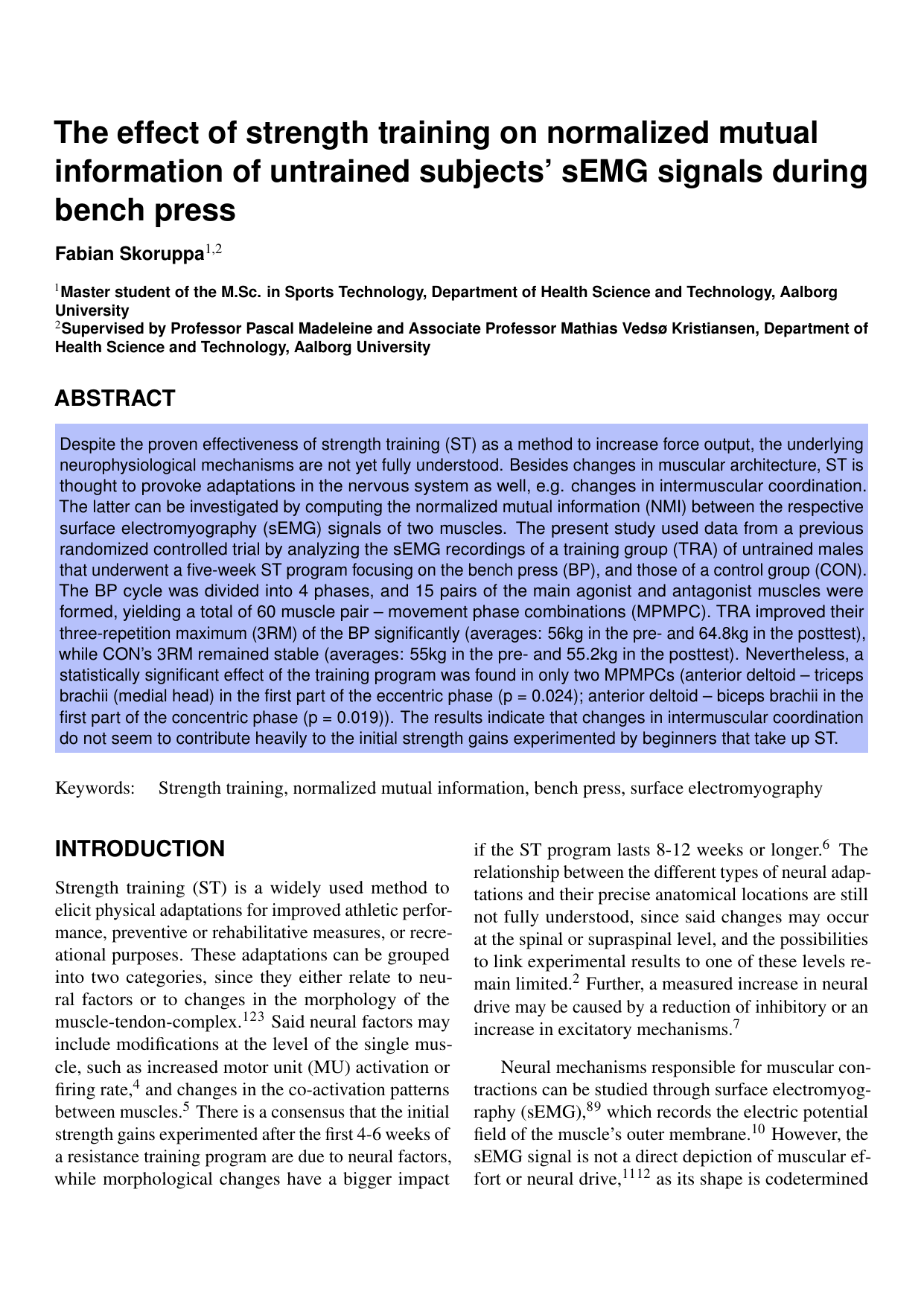
The effect of strength training on normalized mutual information of untrained subjects' sEMG signals during bench press
Author
Term
4. semester
Education
Publication year
2022
Submitted on
2022-06-01
Pages
62
Abstract
Despite the proven effectiveness of strength training (ST) as a method to increase force output, the underlying neurophysiological mechanisms are not yet fully understood. Besides changes in muscular architecture, ST is thought to provoke adaptations in the nervous system as well, e.g. changes in intermuscular coordination. The latter can be investigated by computing the normalized mutual information (NMI) between the respective surface electromyography (sEMG) signals of two muscles. The present study used data from a previous randomized controlled trial by analyzing the sEMG recordings of a training group (TRA) of untrained males that underwent a five-week ST program focusing on the bench press (BP), and those of a control group (CON). The BP cycle was divided into 4 phases, and 15 pairs of the main agonist and antagonist muscles were formed, yielding a total of 60 muscle pair – movement phase combinations (MPMPC). TRA improved their three-repetition maximum (3RM) of the BP significantly (averages: 56kg in the pre- and 64.8kg in the posttest), while CON’s 3RM remained stable (averages: 55kg in the pre- and 55.2kg in the posttest). Nevertheless, a statistically significant effect of the training program was found in only two MPMPCs (anterior deltoid – triceps brachii (medial head) in the first part of the eccentric phase (p = 0.024); anterior deltoid – biceps brachii in the first part of the concentric phase (p = 0.019)). The results indicate that changes in intermuscular coordination do not seem to contribute heavily to the initial strength gains experimented by beginners that take up ST.
Documents
